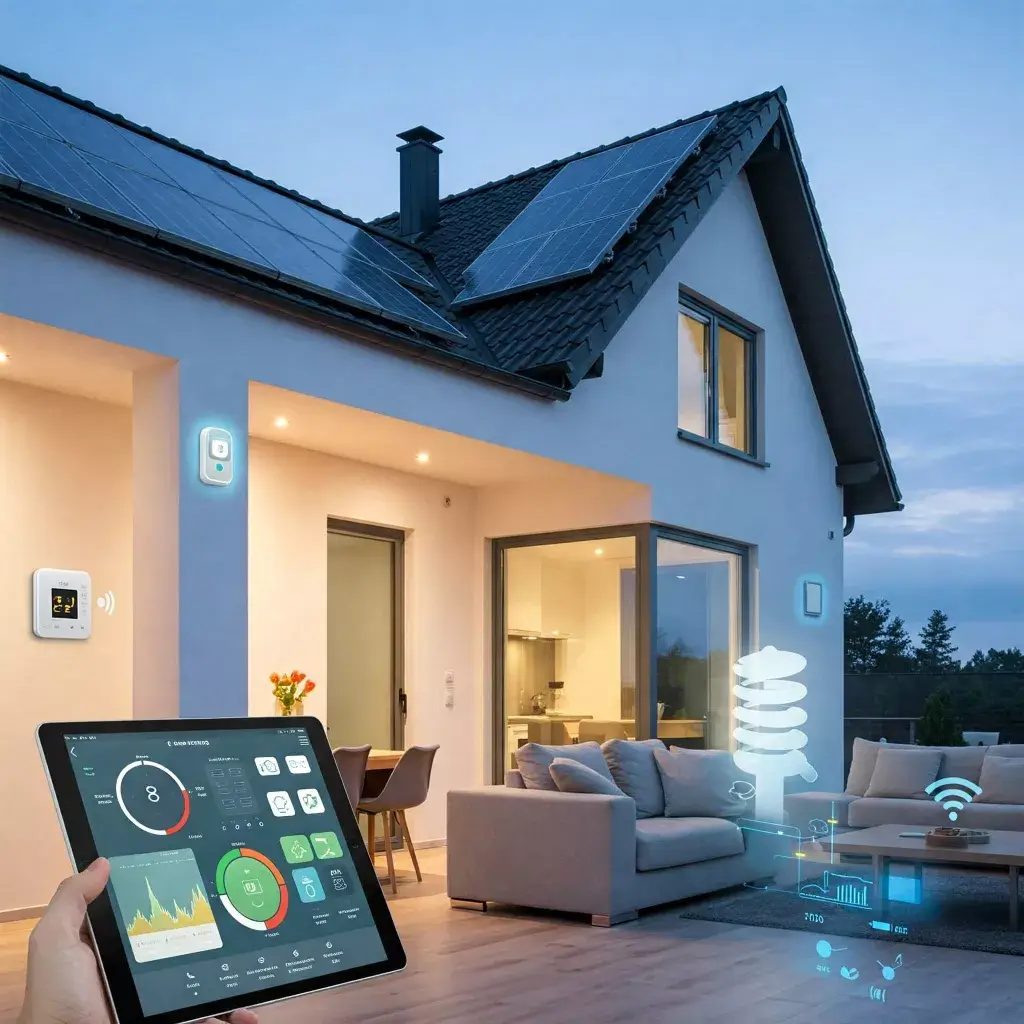1. Introduction
- With the rising cost of electricity and growing environmental concerns, using technology to save energy at home has become more important than ever. Smart devices, automation, and efficient energy management can help households reduce waste and lower energy bills.
- This article explores practical ways to utilize technology for energy efficiency at home.
2. Smart Thermostats for Efficient Heating and Cooling
Automated Temperature Control: Adjusts indoor temperatures based on real-time conditions.
Remote Access: Allows users to control heating and cooling from anywhere via smartphone apps.
Energy Usage Reports: Provides insights into consumption trends and cost-saving opportunities.
Geofencing Capabilities: Adjusts temperature when residents leave or return home.
Learning Algorithms: Analyzes user behavior to optimize energy use automatically.
3. LED Lighting and Smart Bulbs
Energy Efficiency: Uses up to 80% less energy than incandescent bulbs.
Longer Lifespan: LED bulbs last 25,000+ hours, reducing waste and costs.
Dimmable Features: Adjust brightness levels to conserve energy.
App-Controlled Scheduling: Set lights to turn on/off at specific times.
Integration with Smart Assistants: Voice control via Alexa, Google Assistant, or Siri.
4. Smart Power Strips to Reduce Phantom Load
Automated Shutoff: Cuts power to devices when not in use.
Timer-Based Control: Turns off connected electronics at scheduled times.
Energy Monitoring: Tracks power consumption to identify waste.
Surge Protection: Prevents damage to electronics during power fluctuations.
Remote Accessibility: Control power strips via mobile apps.
5. Energy-Efficient Smart Appliances
Refrigerators: Uses sensors to optimize cooling and reduce energy waste.
Washing Machines: Adjusts water levels based on load size.
Dishwashers: Senses dirt levels and optimizes water and detergent usage.
Microwaves and Ovens: Smart preheating and energy-efficient cooking modes.
Smart Plugs: Turns conventional appliances into smart devices with remote control.
6. Home Energy Monitoring Systems
Real-Time Energy Tracking: Provides live updates on energy consumption.
Cost Estimation Features: Helps users understand monthly electricity expenses.
Device-Specific Monitoring: Identifies high-energy-consuming appliances.
Custom Alerts: Notifies users of unusual energy spikes.
Data Analysis and Reports: Offers recommendations for improving efficiency.
7. Smart Window Coverings and Insulation
Automated Blinds: Adjusts based on sunlight exposure to regulate indoor temperature.
Thermal Curtains: Reduces heat loss in winter and keeps interiors cool in summer.
Smart Glass Technology: Adjusts transparency to optimize lighting and temperature.
Remote Control via Apps: Schedule openings and closings for efficiency.
Integration with Smart Home Systems: Works with thermostats for optimal climate control.
8. Solar Panels and Smart Energy Storage
Solar Power Generation: Converts sunlight into electricity, reducing reliance on the grid.
Battery Storage Systems: Stores excess energy for nighttime use.
Net Metering Benefits: Sell surplus power back to the grid for savings.
Remote Monitoring: Track energy production and consumption through mobile apps.
Eco-Friendly Investment: Reduces carbon footprint and long-term energy costs.
9. Water Conservation Through Smart Technology
Smart Sprinkler Systems: Adjusts watering schedules based on weather data.
Low-Flow Smart Showerheads: Monitors water usage and provides real-time feedback.
Leak Detection Sensors: Alerts homeowners about potential leaks to prevent waste.
Smart Faucets: Uses motion sensors to control water flow efficiently.
Automated Toilet Flush Systems: Optimizes water use per flush cycle.
10. Energy-Efficient Home Automation Systems
Centralized Control Hubs: Manage all smart home devices from one place.
Voice Activation: Hands-free operation for energy-efficient adjustments.
Integration with Renewable Energy: Optimizes solar and battery storage use.
Custom Routines: Sets energy-saving schedules for different times of the day.
Remote Access: Control energy use from anywhere via smartphone apps.
11. Smart Meters for Accurate Energy Billing
Detailed Consumption Reports: Provides insights into daily, weekly, and monthly usage.
Real-Time Updates: Tracks energy use as it happens.
Billing Accuracy: Ensures users are charged based on actual consumption.
Encourages Energy Conservation: Helps households monitor and reduce waste.
Government Incentives: Some regions offer discounts for using smart meters.
12. Comparison of Energy-Saving Technologies
| Technology | Benefits | Average Energy Savings |
| Smart Thermostats | Optimizes heating and cooling | 10-15% reduction in energy bills |
| LED Smart Bulbs | Lower energy use and longer lifespan | 80% less energy than incandescent bulbs |
| Smart Power Strips | Eliminates standby power waste | Saves up to $200 annually |
| Home Energy Monitors | Provides real-time energy data | 10-20% savings by tracking usage |
| Solar Panels | Renewable energy source | Reduces electricity reliance by 50% or more |
13. Challenges of Implementing Smart Energy Technology
High Initial Investment: Some smart devices have upfront costs before savings kick in.
Learning Curve: Requires users to understand new systems and controls.
Wi-Fi Dependence: Most smart home solutions need a stable internet connection.
Compatibility Issues: Some devices may require specific hubs or platforms.
Privacy Concerns: Internet-connected devices may pose cybersecurity risks.
14. Conclusion
Using technology to save energy at home is an effective way to lower electricity bills and reduce environmental impact. From smart thermostats to solar panels and energy monitors, these innovations offer convenience and efficiency.
Investing in energy-efficient technology ensures long-term savings and a more sustainable future. With proper usage, homeowners can significantly reduce their carbon footprint while enjoying the benefits of modern automation.
Disclaimers
Energy savings vary based on user habits and home conditions.
Some smart devices require a stable internet connection for optimal performance.
Not all smart appliances are compatible with every home automation system.
Initial costs for energy-efficient technology may be high but offer long-term benefits.
Government incentives and rebates for smart energy devices vary by region.
Author: Dipika Kumari
Publication Date: 27-03-2025
Email: [email protected]
